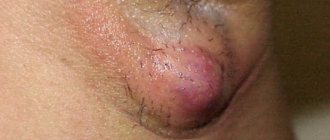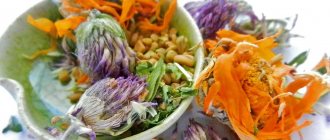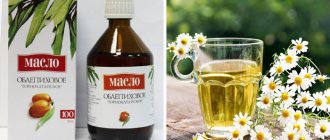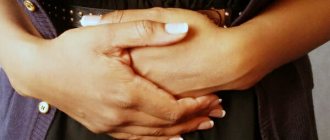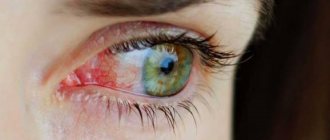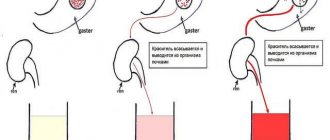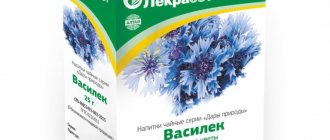Types and classification of fungus in the ears
The disease differs according to the type of pathogen:
- Candidiasis is usually caused by yeast and can appear on the outer surface of the ear, as well as behind the pinna;
- Mucoidosis manifests itself in the form of plaque in the ear canal, and also occurs from yeast fungi;
- Blastomycosis is associated with the proliferation of dermatophytes and affects the external meatus and is characterized by pronounced symptoms.
A fungal infection can manifest itself as:
- Myringitis;
- Middle ear lesions;
- Damage to the external passage;
- Damage to the ear cavity that remains after surgical removal of the mastoid processes.
What is ear fungus
A large number of people on our planet have fungi inside the ear, which begin to multiply and lead to meicosis under certain factors:
- injuries that violate the integrity of the skin;
- dirty water getting inside the ear;
- cleaning the ear too thoroughly with a cotton swab;
- use of antibiotics or hormonal drugs;
- reduced immunity;
- using someone else's headphones or hearing aids.
Symptoms
Signs of ear fungus are easy to recognize because they have distinct characteristics:
- ear discharge is green, yellow, black or white;
- plugs inside the ear that constantly appear, crusts of sulfur form;
- there is a feeling of congestion and noise in the organ;
- the inside of the ear begins to itch;
- pain occurs on the part of the sore ear, which can cause similar sensations in the head;
- hearing loss is observed;
- dizziness occurs.
Types of fungi in the ear of people
Fungal otitis media develops when pathogens of one type or another appear in the ear:
- the yeast fungus candida causes candidiasis, affects the middle ear and the skin of the external auditory canal or the area behind the ears, and resembles eczema in appearance;
- mold fungus in the ear causes the appearance of aspergillosis and mucoidosis, forms behind the ears, on the auricle and ear canal, and resembles plaque in shape;
- Particularly pathogenic fungi form coccidioidosis, blastomycosis, affect the skin in the ear canal, and are characterized by severe symptoms.
Causes of the disease
The most common causes and factors for the development of this disease include:
- Mechanical damage;
- Traumatic injury;
- Poor ear hygiene;
- Narrow passage;
- Hyperhidrosis;
- Dysbacteriosis of the ears;
- Inflammatory processes in the ears;
- Dermatitis;
- Long-term treatment with strong medications;
- Diabetes;
- Ingress of river water;
- Allergic reactions;
- Body stress;
- Weak immunity;
- Oncological diseases;
- Using other people's things, such as headphones and headsets.
A therapeutic complex aimed at complete recovery
See also Treatment of ENT diseases Otomycosis
Our clinic is equipped with the most modern equipment for diagnosing otomycosis, which allows us to most accurately identify the causative agent of the infection.
Depending on the nature of the identified disease, therapy includes complex methods of treating otomycosis, each of which is preceded by a number of hygienic procedures:
- removal of secretions, clots of wax, desquamated epithelium and fungal mycelium from the ear;
- extinguishing polyps and granulations with a 20% solution of silver nitrate;
- washing the middle ear, external auditory canal and tympanic cavity with Miramistin solution.
Only a professional should remove pathogenic microflora. Otherwise, even small amounts of missed discharge may negatively affect the effectiveness and duration of treatment.
To treat otomycosis of the outer and middle ear, the doctor selects antifungal drugs depending on the specifics of the infectious process:
- Multifungin
- Kanesten
- Exoderil
- Nizoral
- Nystatin
- Levorin
Due to the structural features of the hearing aid, the most effective dosage forms are solutions, emulsions and suspensions applied to cotton pads.
Otomycosis, accompanying inflammation of the tympanic cavity, is often accompanied by severe headache. In this case, the doctor is the optimal pain reliever.
Antifungal therapy must be combined with the treatment of concomitant diseases, as well as general strengthening procedures aimed at restoring immunity.
Depending on the nature of the disease, the course of treatment may last 3-4 weeks. If you strictly follow the instructions of your doctor, the risk of relapse is extremely small.
Prevention of otomycosis
All fully cured patients, and people with weakened immune systems, vitamin deficiencies, and diabetes mellitus in particular, must adhere to some basic rules:
- protect your ears, trying to exclude inflammatory diseases of the middle ear;
- protect ears from dust and water;
- regularly clean the ear canals with special preparations - cerumenolytics;
- try not to use earbuds;
- undergo a preventive examination with your attending physician in a timely manner.
Advice from our experts: try not to waste precious time by self-medicating. Do not delay the process; if you experience itching in your ears, immediately seek the help of professional otolaryngologists.
Symptoms
The most common symptoms of fungal development include:
- Skin itching , which is a symptom of the initial stage of the disease. But as soon as the person experiencing it begins to scratch the ear cavity, he thereby spreads it over another surface of the skin. Further development of this disease adds increasing pain and burning;
- Unusual discharge is also a symptom of this disease. In this case, a trip to the doctor is immediately necessary. They can be yellow, green, white, and in some cases even black. Because of them, a person may feel congestion, decreased hearing, and noise;
- Fungus in the ears contributes to faster formation of wax plugs . They are usually covered with a hard crust and can only be removed by qualified specialists;
- Dizziness may occur in some cases;
- Severe pain when swallowing is observed in severe forms of the disease.
When a fungus occurs, the general condition of the human body may worsen, since all symptoms cause severe discomfort. Most often, only one ear is affected, but in some cases both ears may have symptoms of the disease.
This disease can last a very long time in its initial form, when there are no obvious symptoms, or it can very quickly progress to a severe stage, which will be accompanied by severe pain and constant traffic jams.
Can there be complications?
Complications from ear mycosis are possible if treatment was started untimely or incorrectly. The disease can lead to damage to the hearing aid or become chronic with periods of exacerbation. The following complications are possible against the background of the disease:
- purulent otitis, severe pain and pus discharge;
- the spread of mycosis can spread to the face, neck and other parts of the body.
- intoxication of the body, characterized by fever and muscle pain.
If the treatment does not have the desired effect and complications begin, you need to contact an otolaryngologist, who will help you choose the appropriate medications and prescribe additional tests if necessary.
Drug treatment
It is recommended to begin treatment by eliminating the cause of the infection.
If a reaction occurs to strong medications taken, then you must immediately stop taking them.
Methods and remedies for treating ear fungus:
- Drops;
- Ointments and creams;
- Solutions;
- Oral medications;
- Remedies for the intestines.
Drops
Drops effective for treating this disease include:
- Cardibiotic is an anti-inflammatory and also antifungal drug that comes in the form of a yellowish clear liquid. Doctors may prescribe five drops of this remedy in each ear four times a day. The course of treatment should usually not exceed ten days. Contraindications include the child's age less than six years, as well as individual intolerance to some components of the medication. The cost can be 250 rubles ;
- Exo-derm is an antibacterial and anti-inflammatory agent that is practically safe for human health. It has a very active effect on yeast species. You need to use it once a day, but for a long time. The course can last up to four weeks. It is strictly forbidden to use this medicine during pregnancy and breastfeeding, as well as if there are small wounds in the ears and allergic reactions to the components of the drug. This remedy can either be instilled into the ears, one drop up to four times a day, or cotton pads moistened with this preparation can be placed. Average price 400 rubles .
Cardibiotic
Exo-derm
Ointments and creams
Before applying topical ointments, the ears must be cleaned using oil solutions. The ointments must be applied using cotton swabs. The main thing is not to affect healthy areas of the skin.
The most effective ointments are:.
- Mycospor is an antifungal drug that can be prescribed even during pregnancy, but with extreme caution. Apply once a day. The course of therapy is usually prescribed from two to four weeks. It is an expensive drug. The cost is approximately 1000 rubles ;
- Pevaril - this product should be applied twice a day with a twelve-hour break. The duration of the course is two weeks. The cost is about 500 rubles;
- Travogen - quickly destroys many types of fungi. Depending on the stage of the disease, doctors prescribe a special course and individual dosage of the drug. The price of this ointment will start from 600 rubles .
Mycospor
Pevaril
Travogen
Solutions
At an early stage, the fungus can be cured by washing the sinks with various solutions. Everyday hygiene can be carried out with a glycerin solution.
The most prescribed solutions:
- Sanguinarine - prevents the further development of fungal microorganisms. The drug is strictly prohibited for use in atopic dermatitis and bronchial asthma. To use, you need to dissolve one teaspoon in two hundred milliliters of warm, clean water, and then use clean cotton wool or gauze to rinse the affected skin in the ears. You can find the drug for 200 rubles ;
- Clotrimazole
is an antifungal and antimicrobial agent.
It comes in the form of a solution, which you need to moisten a cotton pad and rinse the affected areas. The only contraindication is intolerance to this drug. This drug can cost 250 rubles ; - Nitrofungin - this drug is strictly prohibited to be used during pregnancy and while breastfeeding a child. You need to soak a small piece of cotton wool with the drug and place it in your ear. You can pull it out as soon as it becomes dry. Can be used up to three times a day. The course of therapy can last up to six weeks. It is necessary to wait until the ears are completely healed and only then can you stop using the medicine. The cost of this drug ranges from 200 to 400 rubles .
Sanguinarine
Clotrimazole
Nitrofungin
Oral medications
These most popular means include:
- Diflucan is an antifungal drug that is used to prevent fungal microbes. The dosage is determined based on the severity of the disease by a specialized doctor. The recommended dose is fifty milligrams per day. The course can be up to four weeks. Can be found in pharmacy kiosks for 700 rubles ;
- Orungal - available in capsule form. Used to combat yeast fungi. Should be taken immediately after meals, without chewing. It is an expensive product, the average price is 3,000 rubles ;
- Mycozoral - adults should take one tablet per day with meals, and if the healing process is still at a standstill, it is necessary to take two tablets. Children over 3 years old and weighing from fifteen to thirty kilograms should take 1/2 tablets once a day. The average price is 520 rubles .
Diflucan
Orungal
Mycozoral
Colon products
Intestinal products are also necessary, since fungus often leads to intestinal dysfunction. They also remove harmful substances from the body naturally.
Such means include:
- Bifiform - available in the form of hard capsules, inside of which there is white powder. The medicine has a beneficial effect on the gastrointestinal tract. It contains pathogenic microorganisms. Average cost 400 rubles ;
- Linex also comes in the form of capsules that are completely odorless. Normalizes intestinal microflora thanks to acidic bacteria. It is not a very expensive medicine and can be purchased for 150 rubles .
Bifiform
Linex
Vitamin therapy
This technique is additional for the qualitative elimination of symptoms of illness. At this time, proper nutrition is necessary. It is important to increase the amount of natural foods you consume.
It is strictly forbidden to consume foods to which the body reacts with allergies. You should also avoid sweets, canned foods, fatty foods, and starchy foods.
A vitamin complex containing vitamins A, E, C, H, PP, B5, D, allows you to optimize the supply of useful elements to the body, which contributes to the rapid disappearance of unpleasant symptoms of fungus.
The most prescribed vitamins to combat ear fungus are Alphabet and Duovit.
Alphabet
Duovit
Immunocorrection
Immunocorrection implies the following drugs:
- Viferon suppositories are quite common for the treatment of diseases caused by fungi. Used from the first days of life. The cost will be about 300 rubles ;
- Immunal is an immunostimulating solution that suppresses the proliferation of microbes in the human body. Available in the form of tablets and drops. It is used to strengthen general immunity and for children from one year old. The average cost is 200 rubles .
Viferon
Immunal
Desensitizing agents
Desensitizers are antihistamines used to treat allergic reactions.
These include:
- Zyrtec is available in the form of drops and tablets. Suitable for children from 6 months. Cost from 190 rubles ;
- Erius - available in the form of syrup and tablets. Suitable for children from one year old. Cost from 250 rubles ;
- Fenistil - available in the form of drops. Suitable for children from 1 month. Cost from 290 rubles ;
- Tavegil is available in tablet form. Suitable for children from one year old. Average cost 160 rubles ;
- Claritin is available in the form of tablets and syrup. Suitable for children over 2 years old. Cost from 160 rubles .
Zyrtec
Erius
Fenistil
Tavegil
Claritin
You can also use Nizoral in the form of a red shampoo to treat ear fungus, which reduces severe itching. Apply using cotton swabs to the affected areas, then rinse thoroughly with water and dry the skin dry.
Treatment methods for mycosis
Treatment of ear mycosis includes a set of procedures. First of all, it is worth normalizing the immune system. It is important not only to eliminate the pathogen, but also to prevent re-infection. For the treatment of external fungal otitis, topical preparations (ointments, solutions) are prescribed; folk remedies that can help in the initial stages of the disease can be used in combination.
In the treatment of mycosis of the middle ear and lesions of postoperative cavities, systemic antifungal drugs are prescribed. The duration of therapy depends on the severity, on average 2-4 weeks. Most people manage to overcome the pathology after the first course of treatment.
Folk remedies at home
Ear fungus is a disease that progresses quite quickly and it is not easy to cope with it exclusively using folk remedies. Alternative medicine is mainly an adjunct to primary treatment.
Vinegar
Apple or table vinegar, concentration maximum 6%. Mix with peroxide 1:1. Drip 3 drops per day for 7-10 days. Do not use for ear canal injuries.
Garlic
Has a powerful antibacterial effect. An ointment is made from garlic and vegetable oil. Add a couple of drops of oil to the ground garlic, then the mixture is transferred to gauze and a compress is placed inside the ear for 15-30 minutes.
Geranium solution
Boil fresh geranium over low heat, select inflorescences and mix with 3 drops of onion juice and 5 drops of tea tree oil. Use as a compress, apply to gauze and leave for an hour.
Chamomile decoction
You can only drip decoctions into your ears if there is no damage to the eardrum. The external auditory canal is washed with an infusion of chamomile leaves 1-2 times a day, for at least 10-15 days.
Drug therapy for fungal infection
To treat otomycosis, antifungal ointments and solutions are used, which show a good therapeutic effect; treatment is a long process. Before use, it is necessary to prepare the auricle, clean it of possible secretions and distribute the drug according to the instructions. If the use of local therapy does not have an effect within 2-3 weeks, you should consult a doctor to adjust the treatment.
Solutions
Effective solutions for external use:
- naftifine, has an anti-inflammatory effect, will help cope with itching and burning;
- exoderil, acts against mycoses and candidiasis, eliminates itching, inflammation, applied to the affected area 1/day, duration 2-4 weeks;
- clotrimazole, 2-3 drops of solution are injected into the ear 2-3 times a day, treatment lasts at least another 2 weeks, after the main symptoms disappear;
- candibiotic, has a wide spectrum of action, drop 4-5 drops, 3-4 times a day, course up to 10 days.
How to cure yeast fungus
The middle ear, external meatus and skin behind the ears are affected by yeast mycosis; the following are used for treatment:
- clotrimazole, used for skin lesions caused by mold and yeast-like fungi, applied 2-3 times a day, 6-12 days;
- travogen, has a local antibacterial and antifungal effect, eliminates yeast fungi, applied 1/day, 2-4 weeks;
- mycocin, destroys all types of fungus, applied 2 times a day.
Ointments
The most effective means:
- bifonazole, effective against many types of fungi, applied 1/day, 2-4 weeks;
- mycospor, applied to the affected area 1/day, the course of treatment is 2 weeks;
- terbinafine, the active substance destroys fungal cells, used 3-4 times a day;
- pimafucort, a combination drug, has an anti-inflammatory, antifungal and antibacterial effect, apply to the affected area 2-3 times a day, duration of therapy is at least 10 days.
Probiotics
Otomycosis can be caused by dysbiosis; for this, drugs are prescribed to restore the intestinal microform, a probiotic:
- Linux;
- gastrofarm;
- hilak Forte;
- acipol;
- Lactobacterin.
Treatment with folk remedies
Fungus in the ears can also be treated using traditional methods.
These include:
- Onions are a fairly powerful remedy that every person has in their home. You can add garlic juice to its juice. The duration of use should not exceed four days, one drop per day. Longer use may cause severe burns to the skin inside the ear;
- Apple cider vinegar - suitable for treating affected areas, but it is strictly forbidden to bury it inside;
- Celandine juice can also be used to treat various types of fungi, but it is important to remember that this plant is poisonous. It is prohibited to use it to eliminate symptoms in children. You should also handle this product very carefully. After use, wash your hands thoroughly and try to avoid getting the juice on the mucous membranes of your eyes and nose. The recommended dosage is four drops in each ear three times a day;
- Chamomile infusion - you can wash the affected areas of the skin. To prepare the infusion, you will need one tablespoon of dry herbs and one glass of boiled hot clean water. Let the solution sit for thirty minutes. After the procedure, wipe the surface dry;
- A three percent solution of hydrogen peroxide can be instilled into the ear for a disinfecting effect using a full pipette. To carry out the procedure, you need to treat and cover the sore ear with a cotton swab. You need to stay in this position for more than ten minutes.
Folk remedies for the treatment of this disease include herbal decoctions for oral administration.
It is possible to prepare such products yourself for both children and adults.
To do this you will need:
- Dog-rose fruit;
- Raspberry leaves;
- Nettle;
- Series;
- Rowan fruits.
Method of preparation and application:
- All ingredients must be mixed together and crushed;
- Pour one tablespoon of the prepared mixture into one glass of boiling water;
- Then let the resulting composition brew for one hour;
- Children aged two years are allowed to take this infusion one tablespoon four times a day;
- For older adults, two tablespoons are recommended six times a day;
- Contraindications include intolerance to certain plant species, as well as the appearance of a pronounced allergic reaction after use.
The use of traditional medicine is permissible in combination with medications.
Medicines that were prepared at home are used mainly at the initial stage of the disease, when the spread of the fungus is not yet so great.
Treatment with medications
Before you start taking medications, you need to understand the reason why the fungal infection occurred. Therapeutic measures begin with taking antibacterial drugs. In addition, the treatment regimen should include drugs to increase the defenses and general resistance of the patient’s body. You should also take care of taking antihistamines and vitamins.
To obtain positive dynamics during treatment, you need to regularly treat the ear cavity with water or a glycerin solution.
Why the inside of the throat and ears itches and what means can help very quickly is described in this article.
But this article will help you understand why the inside of your ears constantly itch and what means, including medications, can get rid of this problem.
How to clear ear plugs with hydrogen peroxide and how effective it is is described in this article: https://lechim-gorlo.ru/u/lechenie-u/perekis-vodoroda-v-uxo-ot-probok.html
What cheap drops in the ears are the most effective for inflammation and how to choose them is described in great detail in this article.
The active components of these drugs are able to penetrate deeply into the tissues of the ear, providing a therapeutic effect. Treatment of fungal infections in the ear is carried out using local and general medications. Local treatment should begin with rinsing the ear with solutions.
In the video, how fungus is treated in a person’s ears:
The following remain effective:
- Nystatin;
Nystatin tablets - Clotrimazole;
Clotrimazole - Amphotericin.
It is also necessary to use drops with a vasoconstrictor effect. They will relieve swelling and alleviate the condition. This includes the following drugs:
- Naftifin,
Naftifin - Terbinafil,
Terbinafil - Nitrofungin,
- Itraconazole
If the pathological process occurs due to infection by yeast fungi, then the complex therapy should include the following drugs:
- Econazole,
Econazole - Clotrimazole,
Clotrimazole - Pimafucin,
Pimafucin - Fluconazole,
- Natamycin.
These medications should be applied to a cotton swab and inserted into the affected ear.
When treating external otomycosis, it is necessary to use a drug such as Candibiotic. It effectively stops inflammation, normalizing the condition of the tissues of the diseased organ. In addition to eliminating the inflammatory process, it is necessary to use drops that would effectively stop the fungi that caused the development of the pathological process
The doctor may prescribe the drug in the form of a cream or ointment that effectively destroys fungi.
An excellent effect can be obtained by using the following medications:
- Ecosedrill;
Ecosedrill - Lamisil;
Lamisil - Candide B.
Also, the treatment regimen should include tablets for internal use. These include Pimafucin and Flucostat. But they should be used only in severe cases of the pathological process. When prescribing antibiotics, it is worth prescribing probiotics to the patient. This will protect the intestinal microflora from the negative effects of antibacterial agents.
In this case, the following may be effective:
- Linek,
- Bifiform,
Bifiform - Atsipol,
Atsipol - Hilak forte,
Hilak forte - Gastrofarm,
- Lactobacterin.
The doctor will definitely prescribe vitamins to the patient to boost immunity. You can adjust the body's immune forces with the help of Immunal, Imunorix and Viferon ear suppositories (this article describes how to use Viferon suppositories for colds for children). When used, the healing process is accelerated.
Desensitizing therapy must include drugs such as Suprastin (but this article will help you understand how Suprastin should be used for laryngitis in children), Tavegil and Centrin.
Centrin
When used, it is possible to prevent further growth of the fungus. It will be possible to cure otomycosis in the ear only if you regularly cleanse the ear canal, because this is how dried crusts form. For these purposes, you can use a cotton swab soaked in warm water. The maximum effect can be obtained if treated with glycerin, resorcinol or tannin. The total duration of treatment for fungal infection will be 3 weeks.
Recommendations for treatment
For faster and better treatment, you must adhere to some recommendations, which include:
- To quickly eliminate the symptoms of the disease, the most important need is cleanliness inside the ears . This procedure should be performed very carefully, without causing yourself any pain;
- Using ear sticks, you should only clean the outer shell ; you should not go too deep inside. Only a qualified specialist should restore order there;
- In the cold season, a mandatory attribute of outerwear should be a hat or warm headphones;
- After any treatment procedures, be sure to dry the affected areas of the skin , since the fungus multiplies only in a humid environment.
If you notice the appearance of symptoms and manifestations of a fungal infection in the ear cavity in time and consult a specialized doctor, then a complete recovery will take about three weeks.
Along with treatment, it is imperative to undergo a general examination and take all the necessary tests to view the overall picture of the course of this ailment.
If the treatment does not bring the desired results, then the doctor is obliged to reconsider the prescription, as well as conduct an additional examination and prescribe stronger medications.
How to get rid of ear fungus using traditional methods
As soon as nature does not try to test the health of humanity.
And fungal infections of the skin and mucous membranes go unnoticed by few people. Wherever the fungus likes to settle - nails, groin areas, mucous membranes, and even ears. Yes, yes, and ENT organs are not immune from this unpleasant parasitic settler. As they say, warm, humid – just what you need! In the medical literature, ear fungus is called otomycosis. It is usually caused by the fungus Aspergillus, or candida.
The main symptoms are noise in the affected ear, itching, congestion, hearing loss, disorientation and dizziness, the skin begins to peel, and discharge is possible from the ear canal.
Their color depends on the type of fungus that has affected the organ of hearing. Headaches may occur on the affected side.
Folk remedies
It is worth noting that in the absence of proper treatment, ear fungus goes into a chronic stage, which is very difficult to cope with. Like any disease, mycosis of the ear skin is easier to prevent.
Main causes of mycosis
- Transmission of infection through the use of contaminated items such as headphones, earplugs or hearing aids
- Long-term antibiotic therapy, hormonal disorders.
- Weakened immunity.
- Getting water into your ear from any body of water, even in your own bathroom.
- Unnecessarily frequent ear cleaning.
- AIDS, cancer.
It is worth stopping at the point of “frequent cleaning”. Quite often, ear fungus affects overly clean people, who, when cleaning their ears, cause injuries to the mucous membrane and skin of the ear canal with a cleaning instrument.
At the same time, they don’t even know that sulfur itself is capable of resisting the penetration of fungal spores into the ear canals.
Such diseases should be treated by a specialized doctor. In this case, an otolaryngologist, or “earthroat specialist”. How can traditional medicine help? After all, various fungi have accompanied humanity throughout its existence.
Treatment with celandine
Juice or decoction of celandine. Herbal decoctions are made according to the classic recipe - a teaspoon of dry raw materials per glass of boiling water. Leave until completely cool. The resulting remedy is instilled into the affected ear.
But it is important to remember that celandine is a poisonous plant. Avoid contact with mucous membranes of the mouth, nose, and eyes. Hands should be washed thoroughly after preparing the decoction or juice. Also, do not use this recipe on children. And in general, it is useful for mom and dad to get into the habit of first testing any medicine on themselves, and then “pestering the baby.”
Hydrogen peroxide against mycosis of the ear
Hydrogen peroxide is sold at any pharmacy and costs pennies. Thanks to its chemical formula, it perfectly disinfects any wounds and damage. Place a full pipette in your ear and lie there for about 10 minutes. This procedure should be done three to four times a day. By the way, this method is also used by traditional medicine in the treatment of otitis media of any etiology.
Onion and garlic juice
They are universal in the treatment of fungal diseases, both in a mixture and separately. Instill 5 drops once a day. To do this, grate the head of onion or garlic. Then the juice is squeezed out of the resulting pulp. Use undiluted juice. It is important to remember that onion and garlic juice are aggressive. And the skin of the ear canal and the eardrum are delicate and easily wounded things.
The development of a fungal infection is provoked by a complex of factors: decreased immunity, disruption of the skin’s protective barrier, and a specific microclimate (high humidity and temperature). Mycosis of the ears is rare, because the glands in the ear canal produce a special secretion (sulfur), which protects the hearing organs from the introduction of fungus.
If you are worried about itching in the ear, you notice the appearance of discharge with an unpleasant odor from the ear canal, it’s time to contact an ENT specialist. The doctor will prescribe the necessary tests and, based on the results obtained, select a treatment regimen for the identified pathology.
Often, a complex of therapeutic measures includes folk remedies. For example, to eliminate itching, you can use turundas soaked in a decoction of medicinal plants (chamomile, string, calendula).
But remember: the use of alcohol solutions must be discussed with your doctor.
Home Remedies
Apple cider vinegar. It is not dropped into the ear, but lubricated into the ear canals. It is worth adding that you need homemade vinegar.
Chamomile is a well-known anti-inflammatory and wound-healing agent. We make a chamomile decoction in the usual way and wash our ears several times a day. It is better to drop a full pipette into the ear and then allow the decoction to flow freely. It is better not to do the rinsing procedure, similar to what is done in the ENT doctor’s office, on your own.
There are recipes using bee products - propolis and honey. But you should be careful with them, since many people are allergic to honey. But turundas with propolis after rinsing the ear with peroxide will help to cope with ear fungus quickly.
Self-medication of the ear can cause deafness. Get your illnesses treated by specialized doctors. And if you use traditional medicine recipes, do so only on the advice and under the supervision of a family doctor.
Source: https://NarodnymiSredstvami.ru/lechenie-ushnogo-gribka-sovetami-narodnoy-meditsinyi/
Fungus in the ears of children
This disease in childhood is very dangerous, as it can lead to a number of other more serious problems. During periods of unwellness, the child feels pain inside the ear.
Development, just like in an adult, can be triggered by dirt getting into a minor scratch. Symptoms may include severe itching, congestion, some hearing loss, and noise in the head.
To treat this problem in childhood, the following can be used:
- Pine nut oil can be instilled into the sore ear after rinsing the surface with hydrogen peroxide. One drop is enough for the beginning stage. Use after a year. Cost from 420 rubles ;
- Vishnevsky ointment is prescribed to reduce pain in the affected ear, as well as to speed up the therapeutic process. Can also be used after a year. The average cost is 60 rubles .
Pine nut oil
Vishnevsky ointment
The main medications that can quickly cure fungus are:
- Nystatin ointment , which contains an antibiotic, very effectively fights various types of fungus in children. Can be used from one year of age. The average cost of this ointment is 50 rubles ;
- Flucorem can be used for children, but only over four years of age. The dosage must be prescribed by a doctor. Self-medication is strictly prohibited. You can purchase the ointment for an average of 430 rubles ;
- Intraconazole is a fairly strong drug that can only be prescribed by a doctor. Use for children over 3 years old. The average cost of this drug is 290 rubles .
Nystatin
Flucorem
Intraconazole
Along with medications, doctors recommend long-term use of vitamins, as well as prebiotics and probiotics.
How to recognize a fungus in the ear?
To recognize ear fungus in a person, it is enough to see the main signs of the disease. Even on your own, you can diagnose ear mycosis with almost 100% probability.
However, this does not eliminate the need to consult a doctor to clarify the diagnosis, identify the type of pathogen and prescribe proper treatment.
The main symptoms of fungus in the ear:
- discharge from the ear canal that has an unnatural color - black, yellow, white or green. The color of the discharge will depend on the type of infectious agent;
- frequent ear plugs, presence of wax crusts;
- feeling of noise, congestion in the ear canal;
- pain in the affected ear, radiating to the part of the head from the side of the ear;
- decreased sensitivity and hearing in the affected ear;
- itching sensation in the ear.
You should consult a doctor as soon as possible after discovering the first symptoms of the disease, since if the fungus is not treated at the beginning, it spreads very quickly. The reason is a favorable environment for pathogenic microorganisms - humidity and heat. Left unattended, the fungus causes the development of complex diseases of the ENT organs and other body systems.
Fungus in the ears in pregnant women and during lactation
Since in the early stages the general immunity of a pregnant woman’s body reduces its protective functions, it is at this time that various infectious microorganisms can easily enter some areas of the skin and begin their vital activity.
Treatment requires an adequate approach, since it can reach the eardrum and cause harm to the health of not only the expectant mother, but also the unborn baby.
The treatment method, as well as the drugs intended for them, should be prescribed only by a specialist in this field.
Advice from people who do not understand this issue can threaten the health of the unborn child:
- In the first trimester, it is strictly forbidden to take medications in the form of tablets , even with severe disease;
- In the second and third trimester, doctors prescribe pills only in emergency cases , in those for which other methods and drugs will not give any result at all.
Approved medications include the following ointments and creams:
- Mycoseptin;
- Exoderil;
- Nizoral.
Mycoseptin
Exoderil
Nizoral
During pregnancy and breastfeeding, doctors recommend resorting to traditional medicines.
Homemade recipes for infusions and decoctions of chamomile, oak bark and calendula help fight fungus in the ear. These dry plants can be brewed either separately or together with each other.
Any procedures performed on your body should be discussed with your doctor to avoid serious consequences.
In severe forms of a disease such as fungus, during lactation and if serious drug treatment with strong medications is necessary, breastfeeding should be stopped immediately.
How and what to treat ear fungus
It will take more than one day to recover from an unpleasant illness. Basically, treatment gives results only after 1-2 weeks. Nowadays, a large number of drugs have been created for these purposes. Drops, ointments and tablets are used. A competent doctor will help you in choosing the right remedy. In addition, and at the first symptoms of fungus, you can use home remedies.
Folk remedies
Treatment of fungus in the ears of a person at home can be carried out:
Take 1 tsp. dry herb, brew it with 1 tbsp. boiling water The product should be infused until it cools down. Place 2-3 drops of the resulting drug into your ear. Handle celandine carefully so that the plant does not come into contact with the mucous membranes of the eyes, mouth and nose. After preparing the product, wash your hands.
To treat with this product, lie down on your unaffected ear. Place 1 drop of the product into the patient. As treatment progresses, increase the dose to 4 drops. Before use, warm the bottle in your hands so that the substance reaches the appropriate temperature.
This home remedy is not used for instillation; it needs to be used to wipe the ear canals by applying the liquid to a cotton swab. The product will relieve you of itching and inflammation. To prepare it, mix vinegar and water in equal proportions. The medicine will be effective if treatment of fungus in children is required.
Drugs
To prevent the fungus from causing complications and spreading, it is better to use drug treatment. By going to the hospital, you can easily get the necessary specialist advice. It is very important not only to outline a plan for ridding the organ of pathogenic organisms, but also to find out the root cause of the disease. Folk remedies, which many people like to use because they are natural, will be an excellent addition to treatment.
Antifungal ear drops
To treat mycosis, doctors prescribe the following drugs:
Composition of the drug: clotrimazole, beclomethasone dipropionate, chloramphenicol, lidocaine hydrochloride.
The medicine not only copes with fungi, but also relieves pain and inflammation.
Composition: active ingredient – meta-dioxybenzene.
Indications: used to treat fungal diseases and skin infections, has antiseptic properties.
The active component cefazolin is a broad-spectrum antibiotic, which helps fight fungal and other infections and relieve inflammation.
Hydrogen peroxide
The famous inexpensive drug will help you cope with itching in the ear affected by microorganisms. The organ should be washed with the product, instilling 3-5 drops inside, leaving the medicine inside for 10 minutes. After the procedure, wipe the ear canal with a cotton or gauze swab. In medicine, peroxide is used not as a medicine, but to clean the ear before administering another drug.
Prevention
There is always a high probability of re-occurrence of infection, even if the symptoms of the fungus completely disappear.
As preventive actions, the following should be observed:
- Maintaining immunity of the whole body;
- Eat properly and balanced;
- Avoid allergen products;
- Take vitamins;
- Avoid viral and colds;
- Avoid damage to the skin of the ears;
- Do not allow water to get into your ears, and when doing so, carefully wipe the skin dry;
- Try to give up bad habits;
- Constantly carry out ear hygiene procedures;
- Wash your hands and take baths more often;
- Do not allow the use of other people's toiletries;
- Periodically lubricate the ear canal with antimycotic medications.
It is very important to take the best possible care of your health, as well as constantly improve its protective functions by taking various vitamin complexes and timely hardening.
It is also necessary to carry out timely diagnostics of the body, as well as visit qualified specialists.
Prevention of otomycosis
Prevention is important, both in protecting against fungal infections and after recovery to avoid relapses. Among the main measures recommended are the following:
- maintaining personal hygiene;
- exclude the use of other people's things - hats, headphones, hearing aids, bed linen, towels;
- maintaining immunity at its best;
- careful cleaning of the ear cavity with appropriate cosmetics.
Paying attention to your own health, especially ear health, can prevent the disease and achieve remission. As soon as symptoms of ear fungus are felt, you should consult a doctor. Lost time can cause the infection to spread throughout the body, which will take a long time to treat. In addition to the price of medications and the timing of therapy, neglected fungus will lead to hearing impairment.
Ear fungus is a fairly common disease that affects children and adults alike. It has the official medical name “otomycosis” and is subject to treatment using special medications that eliminate the cause of its occurrence.
Reviews
Reviews of drugs for the treatment of fungus in the ear:
Review of Diflucan
Review of Cardibiotic
Review of Clotrimazole
Review of Mikospor
Review of Nystatin
Review of Nitrofungin
Review of Orungal
Review of Sanguinarine
Review of Travogen
Symptoms of the disease
Signs that identify fungus: • Ear discharge that is grey-green, yellow or brown. • The appearance of inflammation on the skin of the ears. • Constant ringing in the ears. • The appearance of ear wax plugs. • High ear sensitivity. • Painful and itchy sensations. • Constant headaches and dizziness. • In advanced stages, increased pain appears when swallowing and shaving. Initially, a small itchy irritation appears in the ears, which begins to actively grow throughout the entire skin of the ear in a short time.
At the onset of the disease, there is paroxysmal itching, which tends to subside periodically. After the infection spreads through the skin, the itchy sensation does not leave the person and becomes permanent. In addition to itching, a person may experience pain and burning in the ear, or feel a foreign body inside the ear.
The disease can cause severe symptoms such as hearing loss due to the rapid spread and blockage of the external auditory tube.
Any fungus in the ears is determined based on its type: 1. Yeast fungus in the ear. It affects the middle ear, external meatus and the skin behind the ears. Mycosis is similar in appearance to eczema. 2. Mold. If this fungus has attacked, then plaque is found on the ear canal, ears and behind them. 3. Other microorganisms. They arise on the skin of the passage and spread blastomycosis and coccidioidosis.


